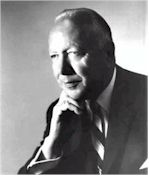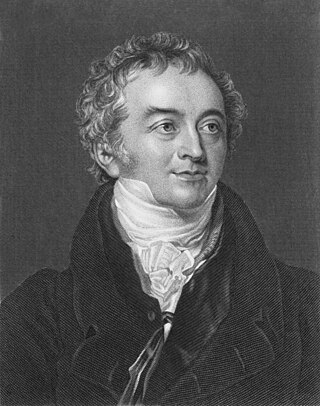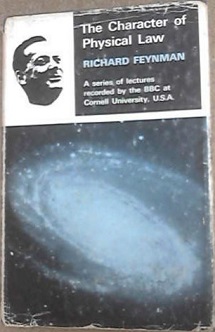
Physics is the natural science that studies matter, its fundamental constituents, its motion and behavior through space and time, and the related entities of energy and force. Physics is one of the most fundamental scientific disciplines, with its main goal being to understand how the universe behaves. A scientist who specializes in the field of physics is called a physicist.

Richard Phillips Feynman was an American theoretical physicist, known for his work in the path integral formulation of quantum mechanics, the theory of quantum electrodynamics, the physics of the superfluidity of supercooled liquid helium, as well as his work in particle physics for which he proposed the parton model. For his contributions to the development of quantum electrodynamics, Feynman received the Nobel Prize in Physics in 1965 jointly with Julian Schwinger and Shin'ichirō Tomonaga.

Steven Weinberg was an American theoretical physicist and Nobel laureate in physics for his contributions with Abdus Salam and Sheldon Glashow to the unification of the weak force and electromagnetic interaction between elementary particles.

In the philosophy of thermal and statistical physics, the Brownian ratchet or Feynman–Smoluchowski ratchet is an apparent perpetual motion machine of the second kind, first analysed in 1912 as a thought experiment by Polish physicist Marian Smoluchowski. It was popularised by American Nobel laureate physicist Richard Feynman in a physics lecture at the California Institute of Technology on May 11, 1962, during his Messenger Lectures series The Character of Physical Law in Cornell University in 1964 and in his text The Feynman Lectures on Physics as an illustration of the laws of thermodynamics. The simple machine, consisting of a tiny paddle wheel and a ratchet, appears to be an example of a Maxwell's demon, able to extract mechanical work from random fluctuations (heat) in a system at thermal equilibrium, in violation of the second law of thermodynamics. Detailed analysis by Feynman and others showed why it cannot actually do this.

Leonard Susskind is an American physicist, who is a professor of theoretical physics at Stanford University, and founding director of the Stanford Institute for Theoretical Physics. His research interests include string theory, quantum field theory, quantum statistical mechanics and quantum cosmology. He is a member of the US National Academy of Sciences, and the American Academy of Arts and Sciences, an associate member of the faculty of Canada's Perimeter Institute for Theoretical Physics, and a distinguished professor of the Korea Institute for Advanced Study.

Julius Adams Stratton was a U.S. electrical engineer and university administrator. He attended the University of Washington for one year, where he was admitted to the Zeta Psi fraternity, then transferred to the Massachusetts Institute of Technology (MIT), from which he graduated with a bachelor's degree in 1923 and a master's degree in electrical engineering (EE) in 1926. He then followed graduate studies in Europe and the Technische Hochschule of Zürich, Switzerland, awarded him the degree of Doctor of Science in 1927.
David Louis Goodstein is an American physicist and educator. From 1988 to 2007 he served as Vice-provost of the California Institute of Technology (Caltech), where he is also a professor of physics and applied physics, as well as the Frank J. Gilloon Distinguished Teaching and Service Professor.

Philip Morrison was a professor of physics at the Massachusetts Institute of Technology (MIT). He is known for his work on the Manhattan Project during World War II, and for his later work in quantum physics, nuclear physics high energy astrophysics, and SETI.

Feynman's Lost Lecture: The Motion of Planets Around the Sun is a book based on a lecture by Richard Feynman. Restoration of the lecture notes and conversion into book form was undertaken by Caltech physicist David L. Goodstein and archivist Judith R. Goodstein.
Carl M. Bender is an American applied mathematician and mathematical physicist. He currently holds the Wilfred R. and Ann Lee Konneker Distinguished Professorship of Physics at Washington University in St. Louis. He also has joint positions as Professor of Physics at the University of Heidelberg and as Visiting Professor of Applied Mathematics and Mathematical Physics at Imperial College, London.

The word energy derives from Greek ἐνέργεια, which appears for the first time in the 4th century BCE works of Aristotle.

The Pleasure of Finding Things Out is a collection of short works from American physicist Richard Feynman, including interviews, speeches, lectures, and printed articles. Among these is his famous 1959 lecture "There's Plenty of Room at the Bottom", his report on the Space Shuttle Challenger disaster, and his speech on scientific integrity in which he coined the term "cargo cult science". The original foreword was written by Freeman Dyson.
Robert Harry Kraichnan, a resident of Santa Fe, New Mexico, was an American theoretical physicist best known for his work on the theory of fluid turbulence.

Matthew Linzee Sands was an American physicist and educator best known as a co-author of the Feynman Lectures on Physics. A graduate of Rice University, Sands served with the Naval Ordnance Laboratory and the Manhattan Project's Los Alamos Laboratory during World War II.
Project Tuva was a collaborative research project between Bill Gates and Microsoft Research in 2009 demonstrating the potential value of an interactive video player platform for learning.
The Messenger Lectures are a series of talks given by scholars and public figures at Cornell University. They were founded in 1924 by a gift from Hiram Messenger of "a fund to provide a course of lectures on the Evolution of Civilization for the special purpose of raising the moral standard of our political, business, and social life", to be "delivered by the ablest non-resident lecturer or lecturers obtainable". The lecture series has been described as one of Cornell's most important of extracurricular activities.

The Feynman Lectures on Physics is a physics textbook based on some lectures by Richard Feynman, a Nobel laureate who has sometimes been called "The Great Explainer". The lectures were presented before undergraduate students at the California Institute of Technology (Caltech), during 1961–1963. The book's co-authors are Feynman, Robert B. Leighton, and Matthew Sands.

The Meaning of It All: Thoughts of a Citizen Scientist is a non-fiction book by the Nobel Prize-winning physicist Richard Feynman. It is a collection of three previously unpublished public lectures given by Feynman in 1963. The book was first published in hardcover in 1998, ten years after Feynman's death, by Addison–Wesley. Several paperback and audiobook editions of the book have subsequently been published.

Lectures on Theoretical Physics is a six-volume series of physics textbooks translated from Arnold Sommerfeld's classic German texts Vorlesungen über Theoretische Physik. The series includes the volumes Mechanics, Mechanics of Deformable Bodies, Electrodynamics, Optics, Thermodynamics and Statistical Mechanics, and Partial Differential Equations in Physics. Focusing on one subject each semester, the lectures formed a three-year cycle of courses that Sommerfeld repeatedly taught at the University of Munich for over thirty years. Sommerfeld's lectures were famous and he was held to be one of the greatest physics lecturers of his time.














